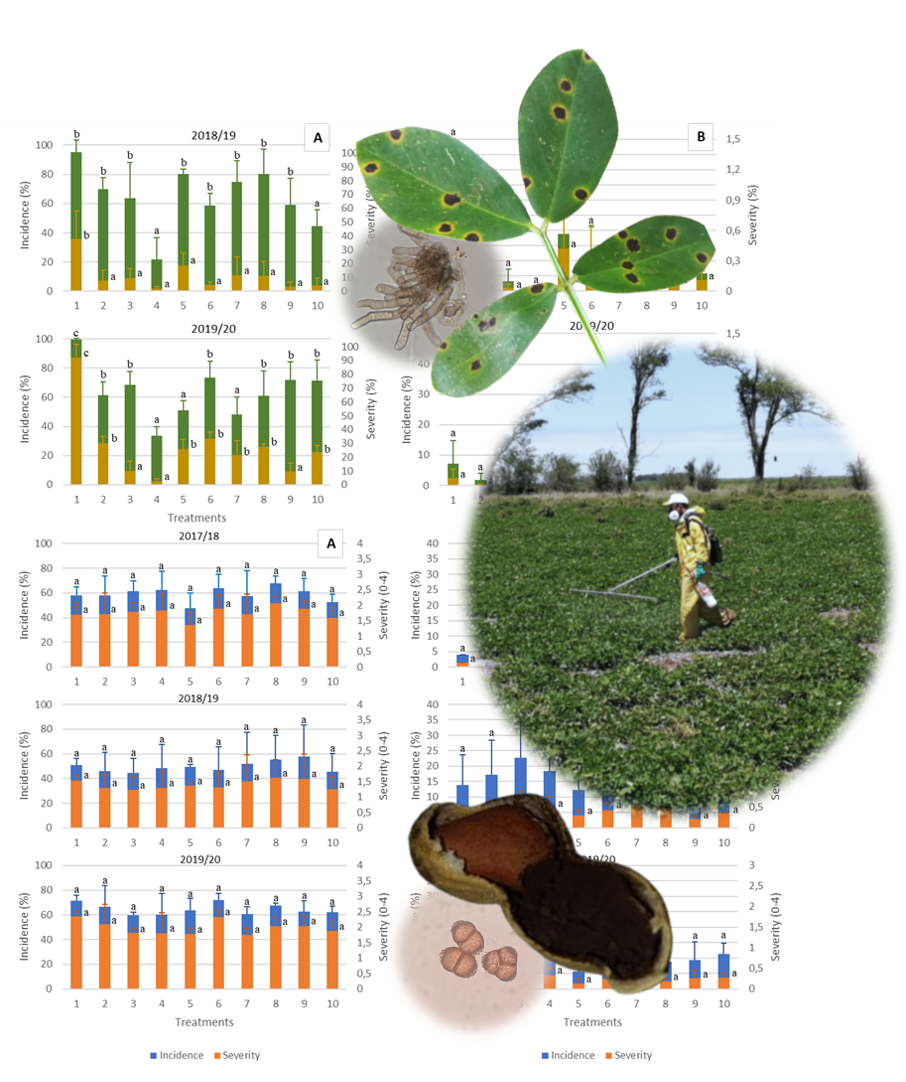Fungicide management of late leaf spot and peanut smut
Palabras clave:
Arachis hypogaea, control químico, enfermedades fúngicas, Nothopassalora personata, Thecaphora freziiResumen

Late leaf spot (LLS), caused by Nothopassalora personata, is the most devastating peanut disease in the world. In Argentina, peanut smut (Thecaphora frezii) has increased significantly in recent decades. LLS is mainly managed through chemical fungicides, however, peanut smut is not effectively controlled, except for some resistant peanut genotypes. This study evaluated the effects of widely used fungicides for LLS control on both diseases and crop yield. Field trials were conducted over three consecutive years in two locations, with different fungicide doses and number of applications. Disease intensities were significantly higher in General Cabrera (GC) than in Vicuña Mackenna (VM) resulting in higher yields in VM. This could be due to the longer history of peanut cultivation in GC, where fungicide applications reduced LLS intensity. Among fungicides, chlorothalonil showed the best performance. However, these treatments were ineffective against peanut smut, likely due to difficulties reaching the infection site. Considering fungicides are one major management tool, further study of different active ingredients against both diseases should also consider sustainable integrated management.
Highlights:
- The intensity of late leaf spot and peanut smut was strongly associated with location.
- The use of chemical treatments proved effective in controlling late leaf spot.
- Peanut smut was not managed thought fungicides.
- It is possible to manage peanut late leaf spot using fungicides with a lower environmental impact.

Descargas
Publicado
Número
Sección
Licencia
Derechos de autor 2018 Revista de la Facultad de Ciencias Agrarias UNCuyo

Esta obra está bajo una licencia internacional Creative Commons Reconocimiento-NoComercial-CompartirIgual 3.0.
Aquellos autores/as que tengan publicaciones con esta revista, aceptan las Políticas Editoriales.



